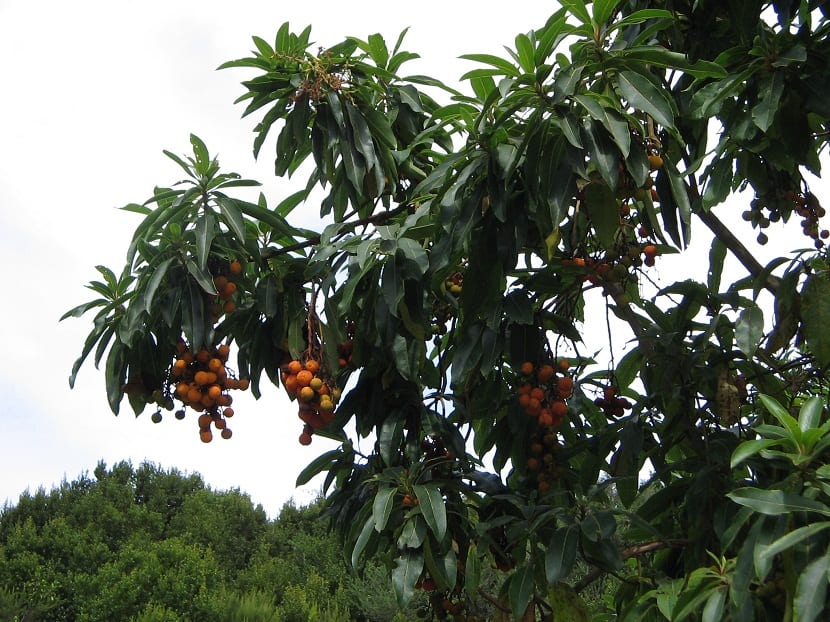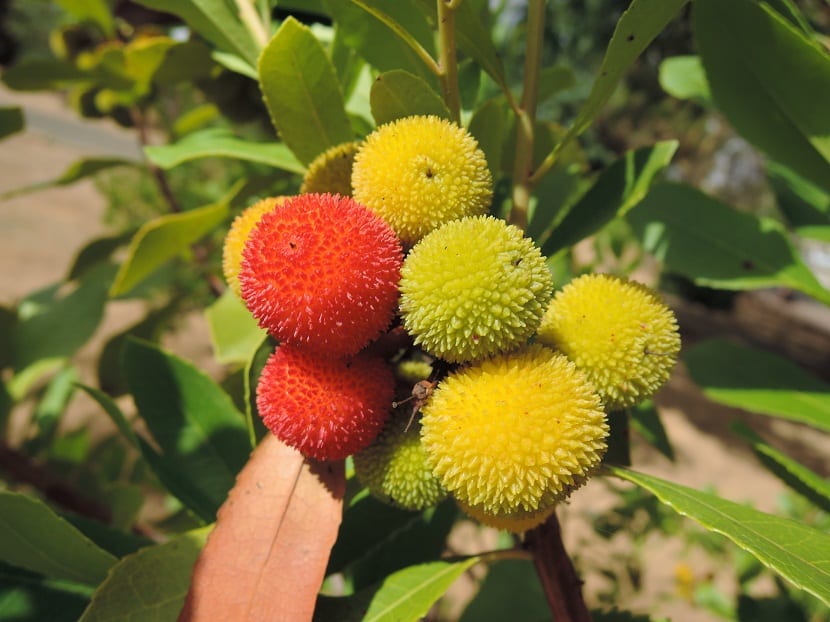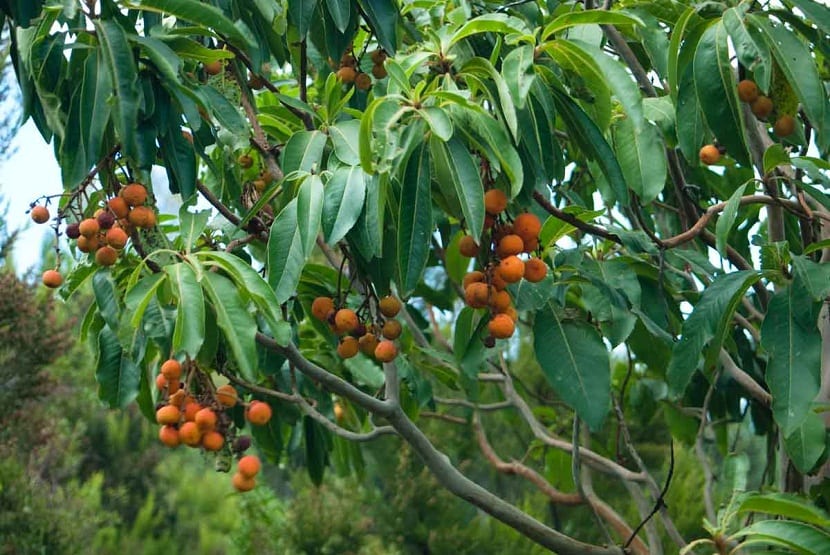
El arbutus canariensis or Canarian strawberry tree as it is known, It is a shrub belonging to the Ericaceae family. It is a unique and attractive species that is not very common, endemic to the Canary Islands and is protected by the authorities of the islands. With beautiful flowers that go from a greenish white to pinkish tones, orange fruits and a rough stem.
This is endemic to the Canary Islands, it can be seen wild in the laurel forests and pine forests in the cloud belt and in certain depressions in the islands of Tenerife, La Palma, Gomera, Hierro and Gran Canaria.
Features

It is a species that in suitable conditions can reach seven meters in height. Its bark is smooth chestnut, of a color that goes from red to pink depending on the season, whose exfoliation in broad bands occurs in late spring. Young plants show soft green bark that darkens in the rays of the sun.
Its evergreen leaves are elongated and lanceolate, dark green on the upper side and light green on the lower side. The small flower clusters of this shrub they bloom between summer and fallThey have a flared appearance and present a white and green crown with pink hues.
Its berries are large fleshy fruits suitable for consumption, they have a spherical shape with a diameter of approximately 3 cm, orange or yellow tones, slightly mealy in texture and have a particular flavor that is not at all like strawberries. An unequivocal sign that its fruits are ripe is when they begin to fall.
Planting and caring for the arbutus canariensis
The seeds of the canarian strawberry tree they must be ripe to be planted. Once they are ready, the seeds are soaked in warm water for approximately 5 to 6 days, then they are preferably sown in the shade.
The organic compost used in its planting must be kept moist. Germination occurs between 2 and 3 months. Once they reach a size that is sufficient for handling, we proceed to transplant the seedlings of the arbutus canariensis in individual containers in a partially shaded location, making sure to keep them well ventilated. This species is prone to getting wet.
Its sowing should be done in autumn or spring, always avoiding periods of frost. The Canarian strawberry tree is quite resistant to climatic variations, so it can tolerate temperatures of up to - 10º C. It grows best in well-drained, nutrient-rich soils, the soil surface must be dry; The acidity, alkalinity or neutrality of the soil used does not matter. This plant, due to its vigor, also tolerates the dry season.
It requires humidity in summer time, however, excess water should be avoided as well. Despite their resistance, young plants must be protected from the cold, while adults do not need it; In addition, they are also resistant to the wind. Flowering occurs from the last stage of summer until the beginning of autumn.
Uses

Due to the beauty of its bell-shaped flowers, it is used to beautify gardens. It is also used as a resource for soil reforestation. Its wood is used in some cases in cabinetmaking work, without forgetting that it is a protected species.
The fruit has a fairly juicy pulp, which is used in the preparation of sweets such as jam. They can be eaten natural or cooked. Due to its high content of natural alcohols, in some regions of the archipelago it is used to make liqueurs. Therefore, consuming them in an exaggerated way can intoxicate people, and even cause diarrhea.
They also serve as food for the animals of the island territory. It is also attributed medicinal properties, which is why some use them to combat diarrhea, inflammations and germs. Its laminae and bark are used to treat various conditions of the urinary tract.
Plagues and diseases
Although it is a plant resistant to most common plant diseases, some types of fungi such as anthracnose or the genus Phytophthora, they can seriously harm you.